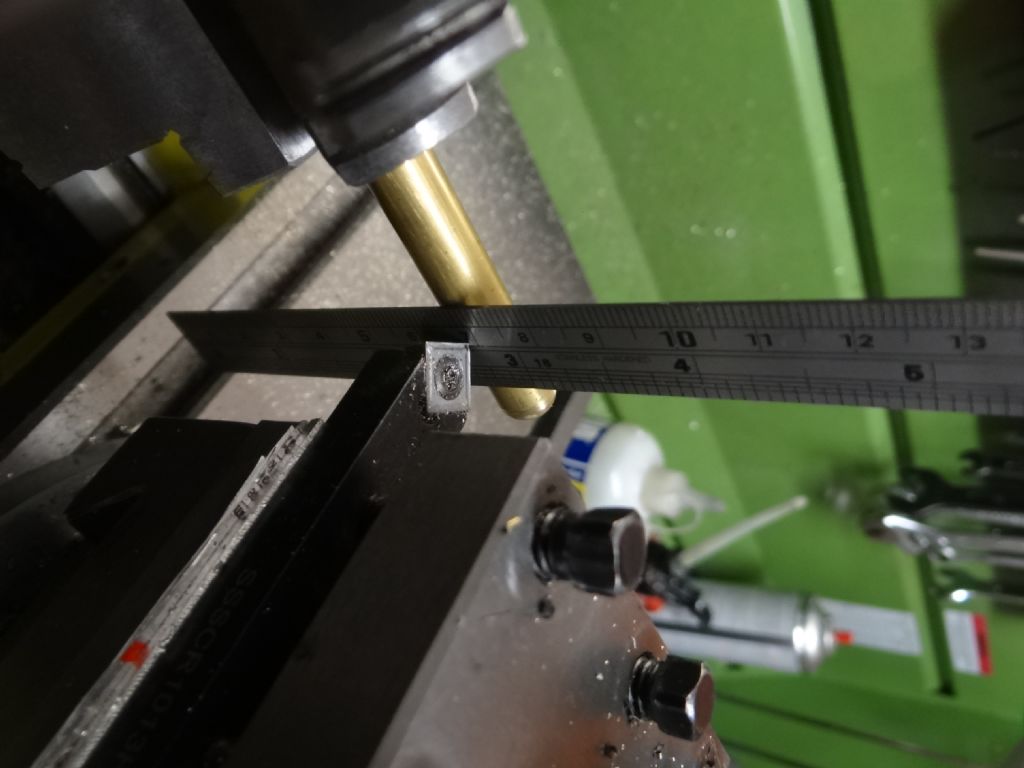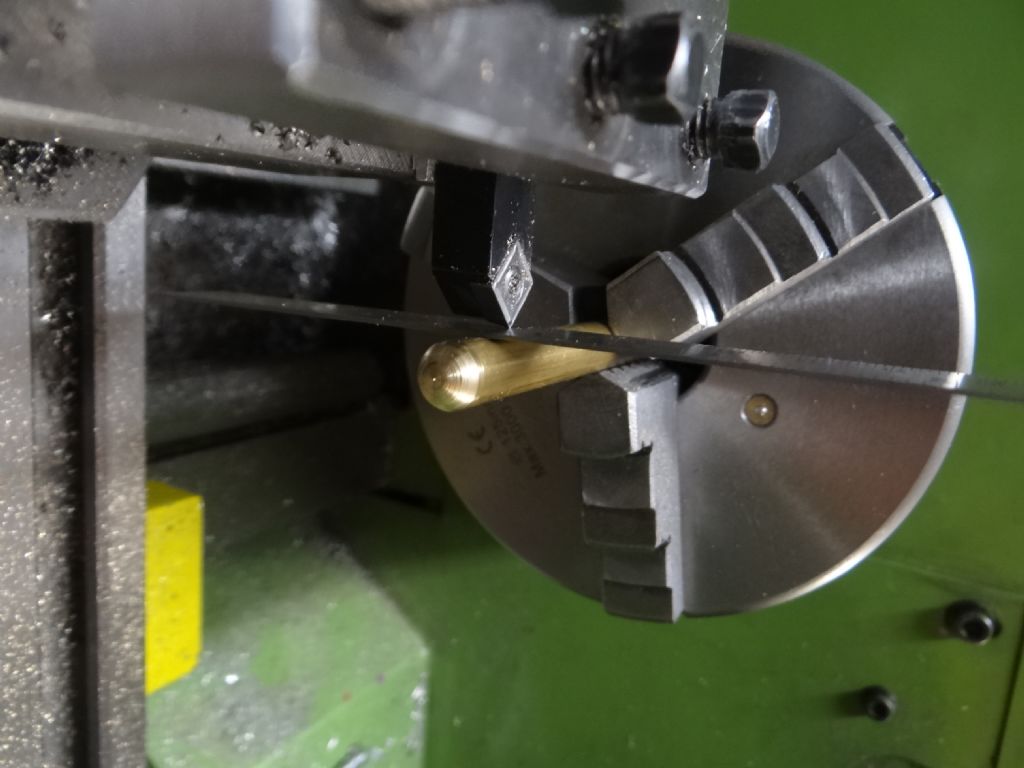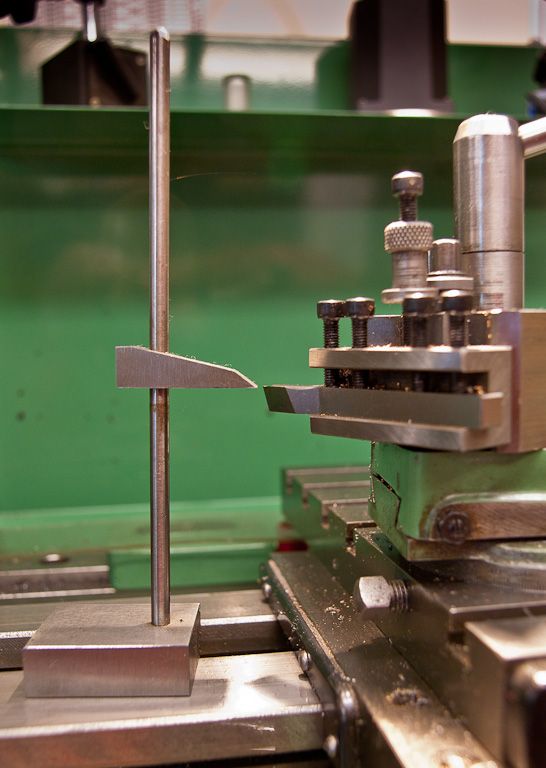Whilst I understand the principle of Stevl's method, if the flat bar is say 6" long and the nose is 1" diameter, to change the end to end variation of the bar by 0.001" by shimming against the nose requires shims in 0.00017" increments, which seems a little unrealistic, or am I missing something?
A similar approach, which doesn't need any shims, is to bolt the test bar as Stevl suggests, then traverse the DTI across the bar, measure the end to end slope of the bar, rotate 180 degrees, measure again. If the spindle is square to the cross slide, the measurements will be exactly reversed. If not you either need to think carefully which way to move the headstock and by how much and try again, or just arbitrarily move it one way and see if it gets better or worse. I think if you adjust it to make the worst of the 2 end to end slopes less it should be the right way, but perhaps others could have a think about it. Only do it a very little bit at a time or you'll get proper confused! This could all take an hour or 2, but should be successful.
An easier way would be for some kind reader of this thread to lend you a faceplate which will fit, but I can't help.
Edited By duncan webster on 02/08/2017 23:32:04
Edited By duncan webster on 02/08/2017 23:32:41
Brian Wood.












